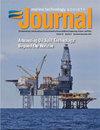极地野生动物研究的卫星遥感
IF 1
4区 工程技术
Q4 ENGINEERING, OCEAN
引用次数: 0
摘要
极地地区的野生动物研究在历史上一直受到站点访问的后勤限制,但最近在使用卫星图像进行动物探测方面的发展为泛北极和泛南极动物种群监测提供了新的可能性。一系列不同的传感器系统已经被用于野生动物研究,但大多数都集中在光学传感器上,它收集可见光谱中的数据,可以像照片一样直接解释。这些传感器包括中等分辨率传感器,如Landsat(30米)和Sentinel-2(10米),以及非常高分辨率的传感器,如Maxar的Worldview-2(51厘米)和Worldview-3(31厘米)。这些建立已久的卫星系统最近加入了一群较小的卫星(所谓的“小卫星”),它们提供的空间和光谱分辨率与Maxar运行的卫星相当。这种迅速扩大的地球观测卫星组合为极地野生动物研究的根本转变提供了可能,但现在收集的数据量之大,使我们人工图像解释的能力黯然失色。为了应对这一挑战,研究人员正在利用计算机视觉的进步,再加上计算能力的提高,有望为我们监测极地野生动物的能力带来一个新时代。本文章由计算机程序翻译,如有差异,请以英文原文为准。
Satellite Remote Sensing for Wildlife Research in the Polar Regions
Abstract Wildlife research in the polar regions has historically been limited by the logistical constraints of site access, but recent developments in the use of satellite imagery for animal detection has unlocked new possibilities for pan-Arctic and pan-Antarctic monitoring of animal populations. A range of different sensor systems have been used for wildlife research, but most have focused on optical sensors that collect data in the visible spectrum and can be directly interpreted similar to a photograph. These include medium-resolution sensors like Landsat (30 m) and Sentinel-2 (10 m) and very high-resolution sensors such as Maxar's Worldview-2 (51 cm) and Worldview-3 (31 cm). These long-established satellite systems have been joined more recently by constellations of smaller satellites (so-called “Small Sats”) that offer imagery of comparable spatial and spectral resolution to those operated by Maxar. This rapidly expanding portfolio of earth observation satellites offers the potential for a radical transformation of wildlife research in polar regions, but the sheer volume of data being collected now eclipses our capacity for manual imagery interpretation. To meet this challenge, researchers are now harnessing advances in computer vision that, coupled with improvements in computing capacity, promise to deliver a new era in our ability to monitor polar wildlife.
求助全文
通过发布文献求助,成功后即可免费获取论文全文。
去求助
来源期刊

Marine Technology Society Journal
工程技术-工程:大洋
CiteScore
1.70
自引率
0.00%
发文量
83
审稿时长
3 months
期刊介绍:
The Marine Technology Society Journal is the flagship publication of the Marine Technology Society. It publishes the highest caliber, peer-reviewed papers, six times a year, on subjects of interest to the society: marine technology, ocean science, marine policy, and education.
 求助内容:
求助内容: 应助结果提醒方式:
应助结果提醒方式:


